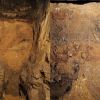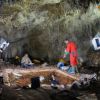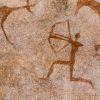-
 +4 +1
+4 +1DNA study finds less than 2 percent of the human genome is "human"
A study looks at an ancestral recombination graph of the genomes of modern humans, Neanderthals, and Denisovans to map how much of our genome is shared.
-
 +3 +1
+3 +1Ancient Siberian cave hosted Neanderthals, Denisovans, and modern humans—possibly at the same time
DNA from ancient soil reveals the history of the cave that cracked open the field of human evolution
-
 +11 +1
+11 +1When Orcs were Real
The Ancient Struggle for Homo Sapiens to Rule the Earth
-
 +4 +1
+4 +1‘Dragon Man’ skull may help oust Neandertals as our closest ancient relative
A fossil skull nicknamed “Dragon Man” has surfaced in China under mysterious circumstances, with big news for Neandertals. Dragon Man belonged to a previously unrecognized Stone Age species that replaces Neandertals as the closest known relatives of people today, researchers say.
-
 +12 +1
+12 +1Amazon-dwellers lived sustainably for 5,000 years
Indigenous people lived sustainably in the tropical Amazon rainforest for more than 5,000 years, a study shows.
-
 +16 +1
+16 +1Enigmatic Designs Found in India May Be The Largest Images Ever Made by Human Hands
Hidden in the vast, arid expanses of India's Thar Desert lie mysterious old drawings carved into the land.
-
 +7 +1
+7 +1Isotope study hints ancient Greeks used foreign fighters in key battle
Some 2500 years ago the Greeks fought many battles – and isotopic analysis of skeletons from one conflict suggests victory may have been made possible with the help of non-Greek mercenaries
-
 +16 +1
+16 +1So Neanderthals made abstract art? This astounding discovery humbles every human
Scientists say cave paintings in Spain, thought to have been by our ancestors, were actually by Neanderthals. So did they teach us everything we know?
-
 +12 +1
+12 +1'Creative' genes gave Homo sapiens edge over Neanderthals: study
Researchers have discovered a series of creativity-linked genes that may have given Homo sapiens a significant edge over Neanderthals, enabling them to avoid extinction.
-
 +19 +1
+19 +1The Mystery Deepens Over Why The Lost City of Cahokia Was Abandoned
For a couple of hundred years, Cahokia was the place to be in what is now the US state of Illinois. The bustling, vibrant city was at one time home to some 15,000 people, but by the end of the 14th century it was deserted
-
 +26 +1
+26 +1Neanderthal DNA extracted from cave dirt shows population movements 100,000 years ago
Where ancient humans lived — and when — can be unveiled using DNA extracted from sediment layers dug from cave floors.
-
 +13 +1
+13 +1DNA from cave dirt tells tale of how some Neanderthals disappeared
First nuclear DNA from sediment shows turnover, migration among ancient cave dwellers in Spain
-
 +4 +1
+4 +1There Could Be a Beautiful Reason Why Constellations Are The Same in Many Cultures
Human cultures can see the world through very different lenses, but the way we sort stars in the night sky is surprisingly universal.
-
 +4 +1
+4 +1Bronze Age miners had cooked meals delivered to their workplace
People working on mining sites in the Eastern Alps during the Bronze Age had cooked, bread-based meals delivered to them during the day
-
 +19 +1
+19 +1Neanderthals helped create early human art, researcher says
Archaeologist says ability to think and create objects may not have been restricted to homo sapiens
-
 +16 +1
+16 +1Women were successful big-game hunters, challenging beliefs about ancient gender roles
Anthropologists believed that before the implementation of agriculture, men hunted and women gathered, but new evidence suggests that this might not have been the case.
-
 +19 +1
+19 +1Why Do We Keep Using the Word “Caucasian”?
When a term signifies something that does not exist, we need to examine our use of it.
-
 +19 +1
+19 +1How did ancient Egyptians bake? After 54 loaves, scholar finds answers
The technique implies covering the inside of the conical bread moulds with a layer of fine sandy clay, heating the moulds up horizontally and shaping the dough in advance into elongated pieces.
-
 +12 +1
+12 +1Study of partial left femur suggests Sahelanthropus tchadensis was not a hominin and thus was not the earliest known human ancestor
A small team of researchers from France, Italy and the U.S., has found evidence that suggests Sahelanthropus tchadensis was not a hominin, and thus was not the earliest known human ancestor. In their paper published in Journal of Human Evolution, the group describes their study of the fossilized leg bone and what it showed them.
-
 +19 +1
+19 +1Humans were drinking milk before they could digest it
Study of ancient Africans suggests dairy consumption predated evolution of lactase persistence genes
Submit a link
Start a discussion




















